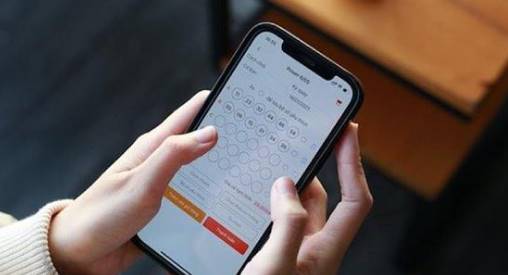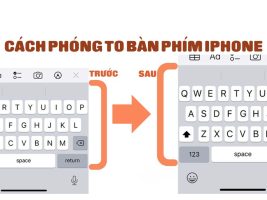How to Create Virtual Desktop (Virtual Desktop) in Windows 10?
Virtual Desktop is a feature built into Windows 10. If you’ve used Linux or Mac, you know this can be a very useful feature. Help users open more applications at the same time on many different desktops. If you have multiple programs open at once, this feature allows you to keep them organized.
| Join the channel Telegram belong to AnonyViet 👉 Link 👈 |
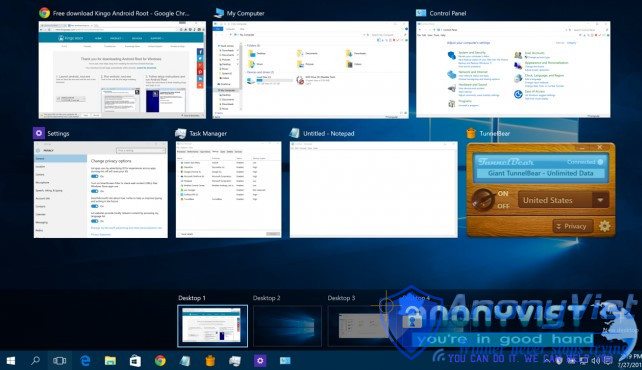
Use Virtual Desktops (Virtual Desktops) in Windows 10
The virtual desktop features in Windows 10 are called “Task View” and are located on the Taskbar.

Clicking the “Task View” button brings up the Task View interface, where you can see the open window on the virtual desktop you added. When you open the Task View interface for the first time, or you only have one desktop, the “Add a desktop” button is available. Click on it to add a virtual desktop.

Now, when you click the “Task View” button, all your desktops show up on the Task View interface. In the example below, there is no window opening on one of the desktops.

If you have program windows open on your desktop, they show up on desktop thumbnails on the Task View interface. When you move your mouse over a desktop on the Task View interface, the open programs on the desktop display as large thumbnails above the Task View interface. Click on one of the large thumbnails to make that program (and corresponding desktops) active. It is similar to the old Alt + Tab feature from earlier versions of Windows. Click on a desktop on the Task View interface to make the desktop active.
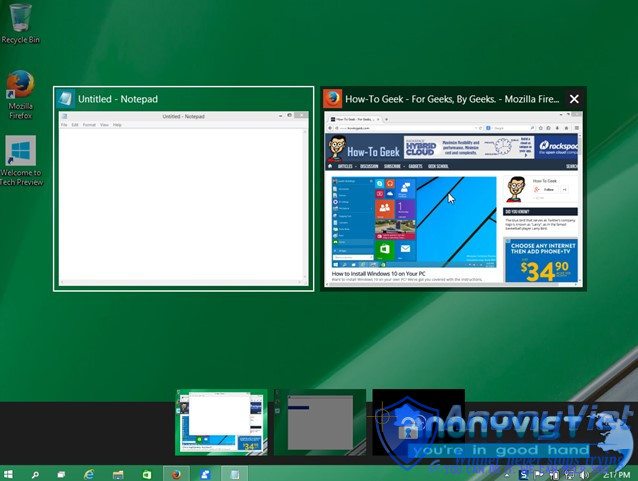
You can switch environments using the keyboard, as well. To do this, press Windows key + Tab. Programs on the desktop screen are currently active as large thumbnails, as discussed above, and thumbnails for active programs on the screen have been mapped out. Now, press the Tab key again. This removes the outline from the active program thumbnail and the Task View active interface. Use the arrow keys to move between desktops on the Task View interface. Once you’ve highlighted the desktops you want to convert, press Enter.
The window that shows when a program is open on another desktop is placed a line under the program’s icon on the Taskbar. Clicking on the icon not only activates the program, but also the desktop on which it is opened.
You can move programs in different desktops that you have set up. To do so, switch to the desktop that contains the programs that you want to move. Click the “Task View” button on the Taskbar. Right-click the large thumbnail for the program you want to move, select “Move to,” and then select the number of desktops to which you want to move the programs.
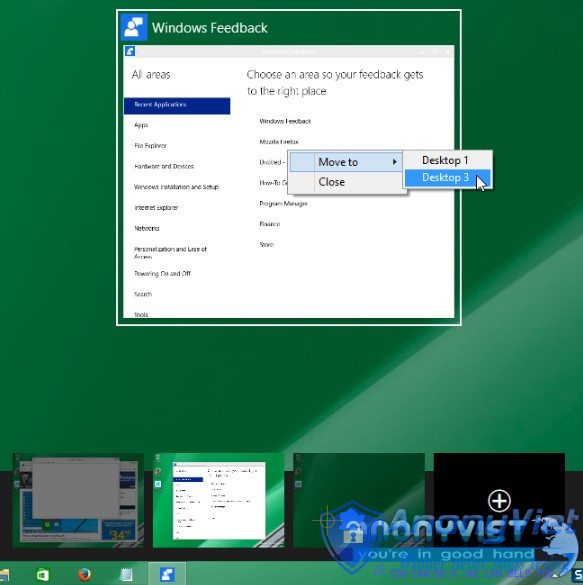
The program is now visible on other desktops.
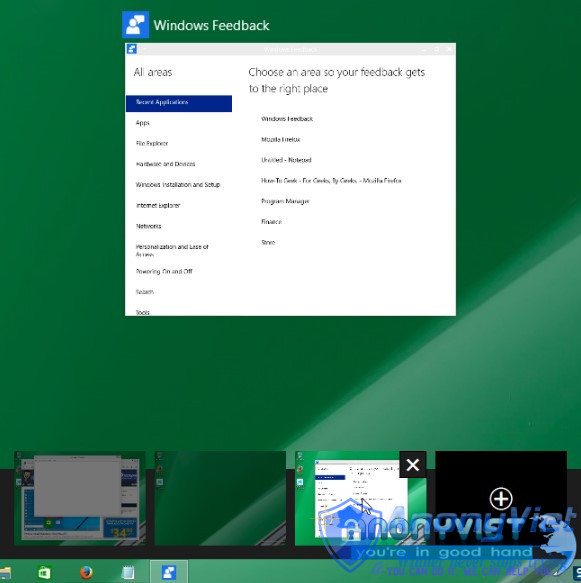
To close a desktop, click the “Task View” button on the Taskbar to bring up the Task View interface. Move your mouse over the thumbnail for the desktop you want to close. Click the X button shown in the upper right corner of the thumbnail.
NOTE: If you close a desktop that has programs open on it, these programs are transferred to the desktop next to the left of the one you are closed.
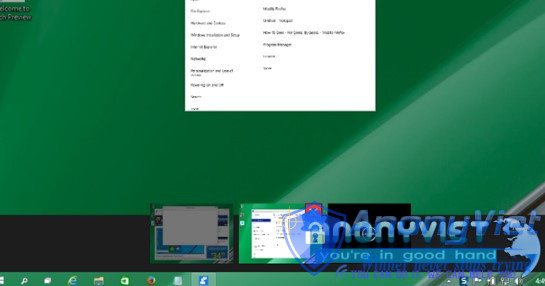
If you’re using a touchscreen PC or device, you can access the Task View, or virtual desktop, by swiping from the left.
Good luck.
Ben – AnonyViet








